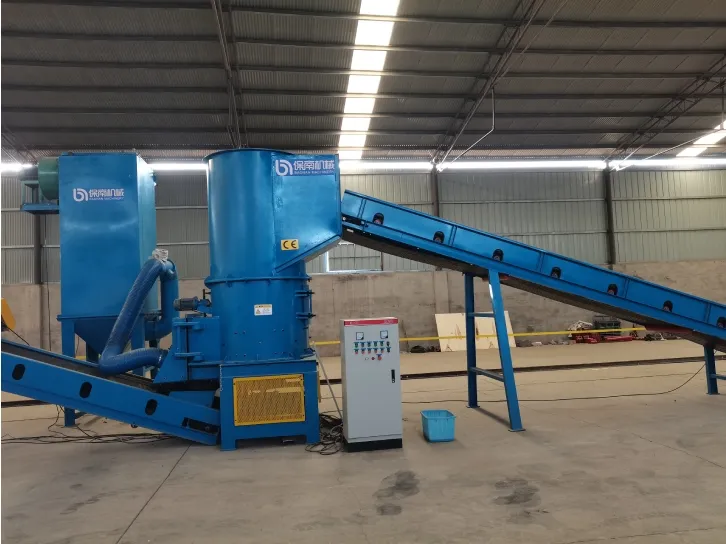

Nov . 15, 2024 04:08 Back to list
The Importance of Non-Ferrous Metal Separators in Recycling and Waste Management
In today's rapidly evolving industrial landscape, the need for efficient and sustainable recycling methods has never been more pronounced. A significant component of this process is the separation of different materials to maximize resource recovery. Among the critical technologies employed in recycling is the non-ferrous metal separator, a vital tool for extracting non-ferrous metals from a mixed waste stream. This article explores the importance of non-ferrous metal separators, their operational principles, applications, and their role in promoting sustainable practices.
Understanding Non-Ferrous Metals
Non-ferrous metals, which include copper, aluminum, lead, zinc, and tin, are metals that do not contain significant amounts of iron. Because they do not rust and are generally lighter than ferrous metals, non-ferrous metals are widely used in various applications, including automotive, aerospace, electronics, and construction. The recycling of these metals is crucial, not only for conserving natural resources but also for reducing energy consumption and greenhouse gas emissions associated with primary metal production.
How Non-Ferrous Metal Separators Work
Non-ferrous metal separators utilize various technologies to effectively isolate non-ferrous metals from a waste stream. The most common types of separators include air separators, eddy current separators, and magnetic separators.
1. Eddy Current Separators These are perhaps the most widely used tools for separating non-ferrous metals. They work on the principle of electromagnetic induction. When a conductive non-ferrous metal passes through a magnetic field, it induces eddy currents that create a repulsive force, effectively pushing the metal away from the non-metal materials. This allows for a clean separation of metals like aluminum or copper from other materials.
2. Air Separators These machines use a stream of air to separate materials based on their weight. Lighter materials are blown away while heavier non-ferrous metals fall to the ground, allowing for easy collection.

3. Magnetic Separators While primarily designed for ferrous metals, certain types of magnetic separators can also assist in preprocessing materials to extract contaminated non-ferrous metals before the final separation process.
Applications of Non-Ferrous Metal Separators
Non-ferrous metal separators play a crucial role in various industries, including
- Construction and Demolition During the demolition of buildings, a diverse range of materials is generated. Non-ferrous metal separators can effectively extract valuable metals from rubble, which can then be recycled and reused. - Automotive Recycling Old vehicles contain a significant amount of non-ferrous metals. Efficient separation of these metals not only helps in resource recovery but also contributes to the environmental sustainability of the automotive sector. - Electronics Recycling As electronic waste continues to grow, the extraction of non-ferrous metals, such as copper and aluminum, from discarded electronics becomes increasingly important. Non-ferrous metal separators facilitate this process, ensuring that valuable metals are recovered.
Promoting Sustainability
The use of non-ferrous metal separators is paramount in promoting sustainable waste management practices. By enabling the efficient recovery of non-ferrous metals, these machines contribute significantly to reducing landfill waste and minimizing the environmental footprint associated with mining new metals. Furthermore, recycling non-ferrous metals requires considerably less energy than producing them from raw materials. For instance, recycling aluminum saves around 90% of the energy required to produce it from bauxite ore.
Conclusion
In conclusion, non-ferrous metal separators are indispensable tools in the recycling and waste management industries. Their ability to efficiently separate non-ferrous metals from other materials not only contributes to resource recovery but also supports ongoing efforts towards a circular economy. As industries continue to face pressure to adopt more sustainable practices, the role of non-ferrous metal separators will only grow in importance. By investing in advanced separation technologies, we can work towards a cleaner, more sustainable future where valuable resources are reclaimed and reused, reducing our reliance on finite natural resources.
Latest news
Troubleshooting Common Eddy Separator Problems
NewsJul.04,2025
The Role of Metal Recycling Plants in Circular Economy
NewsJul.04,2025
The Impact of Recycling Line Pickers on Waste Management Costs
NewsJul.04,2025
Safety Features Every Metal Shredder Should Have
NewsJul.04,2025
How Industrial Shredders Improve Waste Management Systems
NewsJul.04,2025
How Cable Granulators Contribute to Sustainable Recycling
NewsJul.04,2025